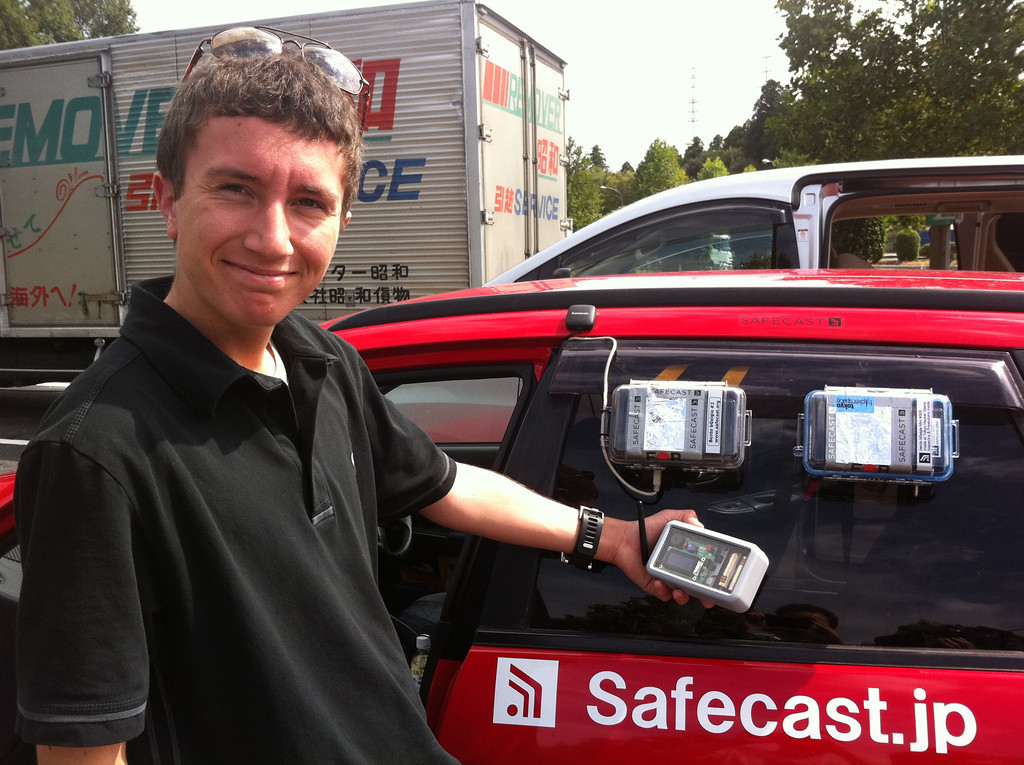
Sensor network helps get accurate data about radiation levels in Japan
Knight Foundation supports Safecast, a global network of sensor devices that collects crowd-based submissions of data about the environment. Safecast’s Director of Global Operations, Sean Bonner, who was recently profiled for his efforts documenting radiation data in Japan, writes about the project’s progress and what’s next. Above: Safecast volunteer Richard Zajac.
When Safecast started we set out to solve one single problem. People in Japan could not get accurate data about radiation contamination and we felt that our efforts could be well spent collecting and publishing that data for people. A lofty goal perhaps, but it seems straightforward enough that it was worth a shot.
The fast action and generous support from Knight Foundation gave us the ability and motivation to try and realize that goal.
Our task was not small to say the least. As there was very little interest in measuring radiation prior to March 11, 2011 there was almost no stock of available monitoring devices for us to use. We were able to get our hands on a limited number of devices and to solve the coverage problem we engineered a way to make them mobile thanks to a dedicated team at the Tokyo Hackerspace. We created the “bGeigie” which enabled us to cover a lot of ground in Japan and add sometimes upwards of 20,000 data points in a single day. To just continue along with this would have eventually solved our initial challenge, however we saw the opportunity to take things a bit further.
We realized that the data we were creating because it didn’t exist in Japan, also didn’t exist elsewhere around the world and there was a clear need to help document a global radiation baseline – so we set out to do that as well. It became clear that if we had the accurate and granular data we were creating from prior to March 11, we’d know a lot more about what had actually happened. Unfortunately all we know is the results so we’re left guessing what things were like before. Our hope is the global dataset we’re now building will be valuable for future researchers. Within the first 12 months of monitoring we collected and published over three million new data points.
As we took these measurements, we were confronted with the fact that radiation monitoring devices hadn’t been updated in over 20 years – since the last accident brought them to public attention. Since we had the support and we had the talent, we decided now was the time to take a big step forward with the hardware. We designed a new geiger counter, keeping things completely open source, and updated it with all the modern features we would have liked to have had available to us. Upon releasing the plans, International Medcom agreed to help manufacture it and our introductory Kickstarter campaign for the device is currently 500% overfunded. This new device will help enable even more people to contribute accurate data to our global resource.
The data itself posed an interesting problem. We decided early on that our mission was to collect the data, not to comment on it. We didn’t want to get involved with the politics of nuclear regulation and safety, rather we wanted to give people accurate info so they could make their own informed decisions. But displaying that data isn’t as easy as it sounds, as all mapping and visualization options available to us conveyed things we didn’t intend and restricted how much data we could show. So our visualization team at the MIT Media Lab decided to build a new platform from scratch to solve not only our needs, but the needs of anyone with a large dataset tied to locations. That platform, which we’re calling GeoSense, will be released to the public soon so that anyone with a location based visualization need can benefit from it, free of charge.
As we look toward 2013 and consider the data we’re collecting, we’re also excited about adding other environmental sensors to our devices and begin tracking air quality and particulate count as well. The support from Knight Foundation has been crucial to our efforts and we’re excited to see what else we can accomplish in the future.
Recent Content
-
Journalismarticle ·
-
Journalismarticle ·
-
Journalismarticle ·


